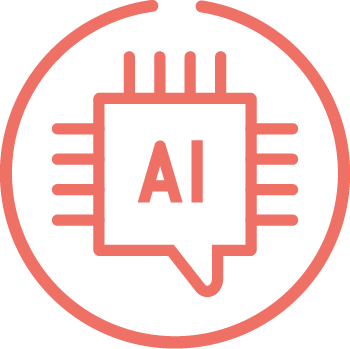Audio Version: Press Play to Listen
How a platform approach to AI can support standardization and improvement of care for veterans.
The Veterans Health Administration (VA) is the largest integrated healthcare system in the United States, is defined by its systemwide clinical expertise, team-based primary care model, and holistic approach to healthcare. These unique factors also play a key role when it comes to the adoption of healthcare AI applications in the VA, from concerns about interoperability and security to ensuring selection of the best algorithms from a veterans’ health outcomes perspective. Here we discuss how adoption of a platform-based approach to the selection, delivery and management of AI applications can help mitigate such issues.
Shift towards a federal SaaS model
The increasing prevalence of AI in healthcare led the National Artificial Intelligence Institute to introduce the VA Artificial Intelligence Strategy in 2021, which aims ‘to improve outcomes and experiences for our Veterans by developing trustworthy AI capabilities to support the Department of Veterans Affairs mission.’ Today, the VA faces an overwhelming choice of Al-powered applications, paired with rigorous government flow-down requirements for procuring new technology.
Serving over nine million veterans each year, the VA spans more than 1,300 health care facilities across the US, including 172 medical centers. The organization is divided into 18 regional systems, known as Veterans Integrated Service Networks (VISNs), which historically have operated somewhat independently from a procurement perspective. In recent years, the federal government has increasingly been focused on shifting towards a Software as a Service (SaaS) model to ensure a standardization of care across the VA.
From an AI perspective, this push for standardization is driving the need for a single point of integration at the VISN level to ensure clinical interoperability across the ecosystem. This need is most ably served by the adoption of a platform-based approach to navigating the multitude of AI solutions available and determining which are best suited to the specific needs of the VA.
Platform approach solves AI for the VA
A platform like Blackford empowers the VA to evaluate and onboard multiple on-premise, VA-ready Al applications and to do so in parallel, supported by monitoring and reporting tools to help clinicians and administrators alike demonstrate the value being generated from Al. By centralizing access to various AI solutions through a dedicated platform, the VA can efficiently evaluate, implement, and maintain a diverse array of imaging AI applications. This not only maximizes resource utilization but also reduces deployment timelines and financial overheads.
Crucially, adopting a platform like Blackford also allows the VA to test multiple different AI solutions using its own data before deployment. This enables retrospective analyses to assess which application performs best in the VA environment and ensure the selection of the most effective tool for a particular case.
Blackford’s platform-centric approach simplifies several processes by consolidating contact management, deployment procedures, and ongoing support into a single interface. Platforms seamlessly integrate with existing hospital systems, ensuring smooth performance, particularly in handling Digital Imaging and Communications in Medicine (DICOM) interfaces. This integration is crucial for maintaining operational efficiency and ensuring that new AI tools can be adopted without disrupting existing workflows.
Security is paramount
While healthcare IT and data security is a top priority in any institution, as an arm of the federal government, the VA has a particularly expansive and intensive security requirement.
The VA’s Technical Reference Model (TRM) and Electronic Research Administration (eRA) are two key components that enterprise applications, including AI, must comply with. Most of today’s AI solutions are cloud-based applications, which presents challenges for adoption in the VA. Crucially, an on-premise platform like Blackford can operate within the VA’s private cloud, without sending information outside. This meets a key security requirement, while still providing access to a wealth of cutting-edge AI technologies – essentially providing flexibility in an inflexible environment.
In the past, deploying five AI algorithms could realistically have taken up to five years, the adoption of a platform approach like Blackford could see the same five applications rolled out in three months today.
In addition, the Federal Risk and Authorization Management Program (FedRAMP) presents additional challenges for rolling out cloud-based AI applications within the VA. The program requires a standardized approach to security assessment and authorization for cloud computing products and services. Adopting a platform approach can help address these challenges by placing the onus on the platform vendor to ensure that all FedRAMP requirements are met for any application on the platform.
A focus on outcomes
Unlike private healthcare institutions, which may be focused on factors like reimbursement, when it comes to AI, the VA’s definitive measure of success is the impact on veteran health outcomes. One of the VA’s defining features is its patient aligned care team (PACT) model, which emphasizes patient-driven, proactive, and personalized care, and goes beyond disease management to focus on disease prevention, wellness, and health promotion.
This unique model has key implications for the adoption of AI in the VA. Whether it’s AI for detecting extremity fractures in X-rays, opportunistic screening for osteoporosis, stroke care or breast health, the primary driver for the VA is “does this ensure the patient is receiving the best-available care.”
In 2024, the PACT Act came into effect – a new law that expands VA health care and benefits for veterans exposed to burn pits, Agent Orange, and other toxic substances. Faced with a shortage of radiologists and a growing volume of scans to process, the VA is increasingly looking towards AI as a way to improve outcomes in relation to the PACT Act.
With government funding allocated towards solutions that address these challenges, platforms like Blackford can provide VA-specific packages of clinical AI applications that meet the requirements of the PACT Act. Indeed, Blackford’s toxic lung screening package has been specifically developed to optimize workflows related to the PACT Act, offering applications spanning use cases including lung nodule detection and lung volume assessment. In addition, Blackford also provides a host of AI applications covering health areas relevant to the VA, including stroke care, cardiology, fracture detection, breast screening, and many others.
By offering comprehensive bundles of AI applications through a single contract, a platform approach like Blackford’s eliminates the complexities associated with acquiring individual algorithms. This simplifies the procurement process and ensures that the VA has access to a broad spectrum of AI solutions.
Case study: Adding value to the VA’s teleradiology division
The VA NTP provides 24/7 diagnostic radiology services to VA medical facilities across the US. As teleradiology programs often cover after-hours and nighttime radiology reads, their coverage is essential to the continuity of critical patient care. In the case of the VA NTP, the team had to be able to respond to stat reads from 120 different VA facilities across the country. Complicating matters was the fact that the imaging studies were not standardized across these facilities.
When Blackford partnered with the VA NTP on AI for stroke care, the first challenge was to focus on standardizing aspects of the varied imaging data set. Almost every imaging center and radiology department faces challenges with imaging standardization, but AI applications work best on homogeneous data sets to provide accurate, reproducible results. With the VA NTP, the data comes from a variety of scanners of different ages, protocols, naming conventions and more, making it one of the most diverse data sets in the country. Blackford and the VA NTP focused on standardizing naming conventions, building an engine that homogenized the series naming conventions in order to ensure that the studies were routed and identified properly for analysis.
The next step was to focus on improving triage of stroke cases for the VA NTP. Working with Blackford, they identified an appropriate application to test. Unfortunately, the first AI application tested did not perform as well as the neuroradiology team had expected. As the VA NTP had already integrated the Blackford Platform into their environment, it was a seamless process to work with Blackford to identify and evaluate another application that might prove a better fit. There were no additional integrations required.
The VA’s neuroradiologists saw significant improvement in the new application’s capabilities, and NTP PACS Administrators also found that deploying AI applications on the Blackford platform made it an easy, single-source process. Having successfully implemented the stroke care application, the VA NTP is now working with Blackford to integrate breast imaging AI into the platform.
Partnering with Blackford and leveraging the platform and tailored services approach is streamlining the identification, evaluation and deployment of AI into the NTP environment, allowing the VA to focus its efforts on additional use cases where AI can help realize ongoing value.










.jpg)







